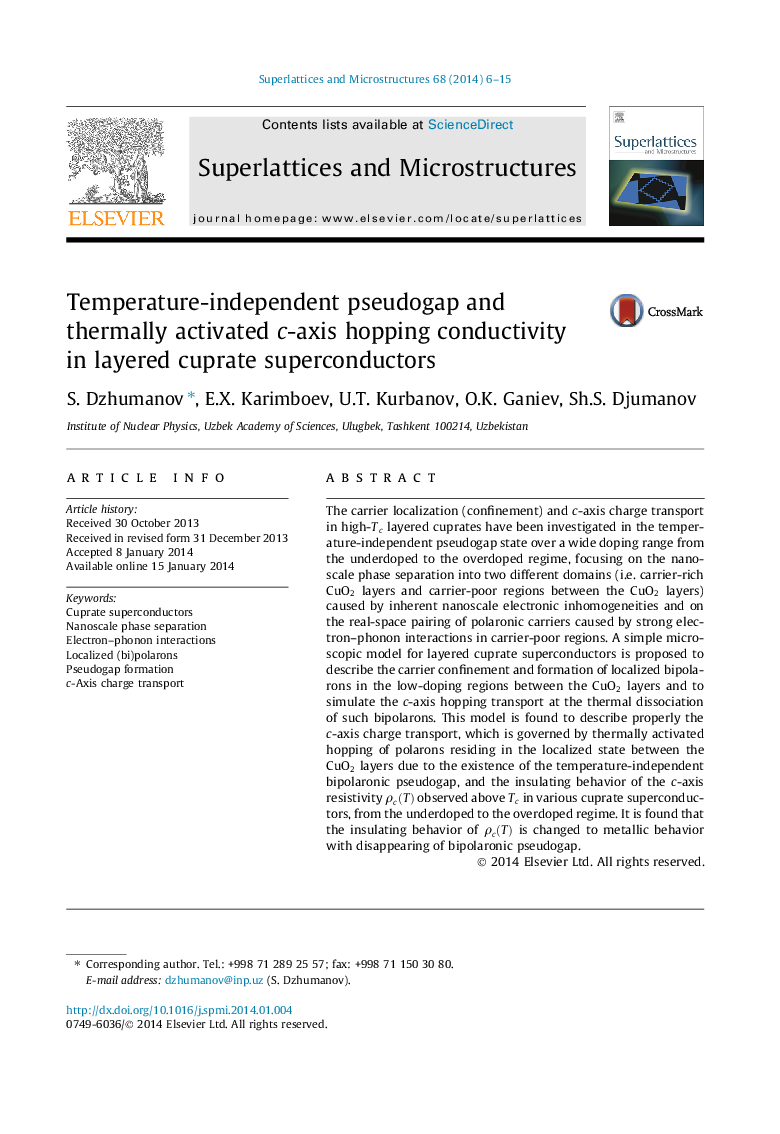| Article ID | Journal | Published Year | Pages | File Type |
|---|---|---|---|---|
| 1553399 | Superlattices and Microstructures | 2014 | 10 Pages |
•Carrier localization (confinement) and pseudogap formation in cuprates are discussed.•A new theoretical model of c-axis charge transport in layered cuprates is proposed.•A good quantitative agreement was found between the theory and experimental data.
The carrier localization (confinement) and c -axis charge transport in high-TcTc layered cuprates have been investigated in the temperature-independent pseudogap state over a wide doping range from the underdoped to the overdoped regime, focusing on the nanoscale phase separation into two different domains (i.e. carrier-rich CuO2CuO2 layers and carrier-poor regions between the CuO2CuO2 layers) caused by inherent nanoscale electronic inhomogeneities and on the real-space pairing of polaronic carriers caused by strong electron–phonon interactions in carrier-poor regions. A simple microscopic model for layered cuprate superconductors is proposed to describe the carrier confinement and formation of localized bipolarons in the low-doping regions between the CuO2CuO2 layers and to simulate the c-axis hopping transport at the thermal dissociation of such bipolarons. This model is found to describe properly the c -axis charge transport, which is governed by thermally activated hopping of polarons residing in the localized state between the CuO2CuO2 layers due to the existence of the temperature-independent bipolaronic pseudogap, and the insulating behavior of the c -axis resistivity ρc(T)ρc(T) observed above TcTc in various cuprate superconductors, from the underdoped to the overdoped regime. It is found that the insulating behavior of ρc(T)ρc(T) is changed to metallic behavior with disappearing of bipolaronic pseudogap.
